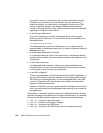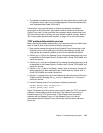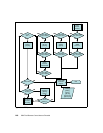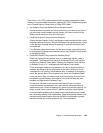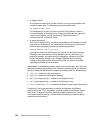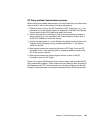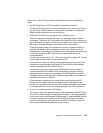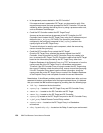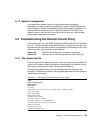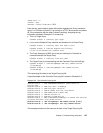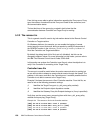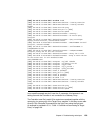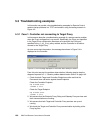Chapter 5. Troubleshooting techniques 153
From here on, the RC Proxy problem determination process is explained in
detail.
Are RC Target Proxy and RC Controller Proxy services started?
If these services or process are not up and running, you need to start them. If
you are using a Relay between the two proxies, you need to verify that the
Relay service or process is up and running too.
Could the RC Target Proxy contact the RC Controller Proxy?
When the components are started, they try to exchange signals, called a
handshake. The Parent RC Proxy sends to its Child Proxy a Who request and
then the Child Proxy replies. Similarly, the Child RC Proxy sends to its Parent
RC Proxy a Tell reply message and the Parent RC Proxy replies.
These exchanges enable the components in a chain of communication to
establish the labels of all the components in the chain. When one of the
components is not running, the handshake fails. A message in the rcproxy.log
on the Parent and Child RC Proxy list the component with which the
handshake failed.
You can refer to the section 5.2.1, “The rcproxy.log file” on page 155, to know
how to check this information in the rcproxy.log file.
If you also use a relay, you need to look at the relay.log too to control if the
handshake is made between the Parent RC Proxy and the Relay but also
between the Relay and the Child RC Proxy.
Furthermore, you have to be sure that the Parent RC Proxy is trying to
communicate with the Child RC Proxy, and inversely, using the correct IP
address and ports. Check the rcproxy.cfg of the RC Target Proxy and RC
Controller Proxy and the relay.cfg, if a Relay is used, files to control which IP
address and ports are configured.
If communication problems occur, check that the ports used by the RC
Proxies are not already used by other applications. Check also that the
firewall is not preventing any communication and that the DNS is configured
to correctly resolved, normal and reverse resolution, the Tivoli hostnames.
Is eqnrcmai process started on RC Target?
You need to verify if the eqnrcmai.exe process is spawned on the RC Target.
This can be verified by either checking the lcfd.log file or by using a process
monitor tool, such as the Windows Task Manager. It maybe possible that this
process is already running when you are starting the session, and since it
cannot be started twice, you need to kill it or wait 5-10 minutes so that it is
automatically killed before attempting a new session.




